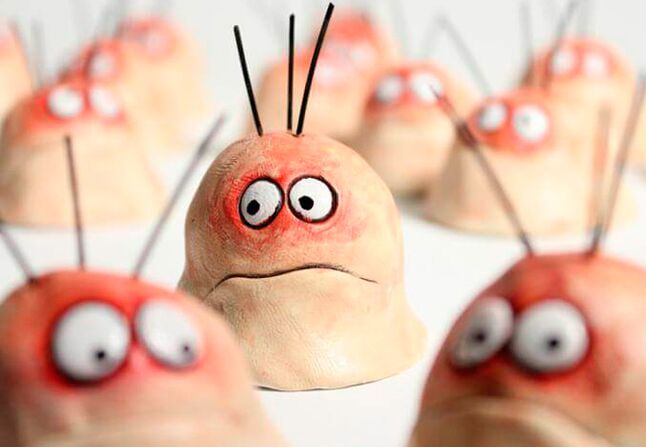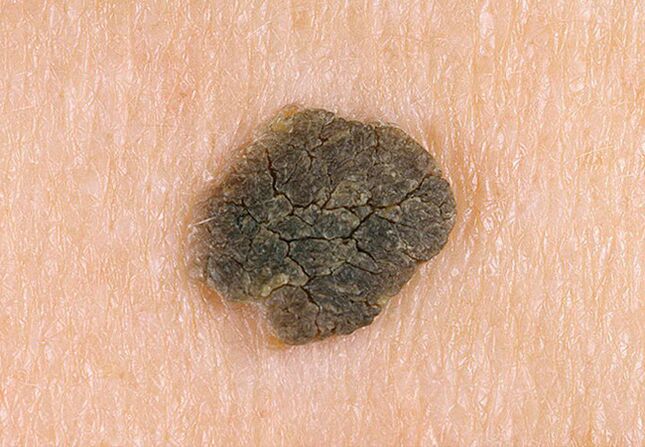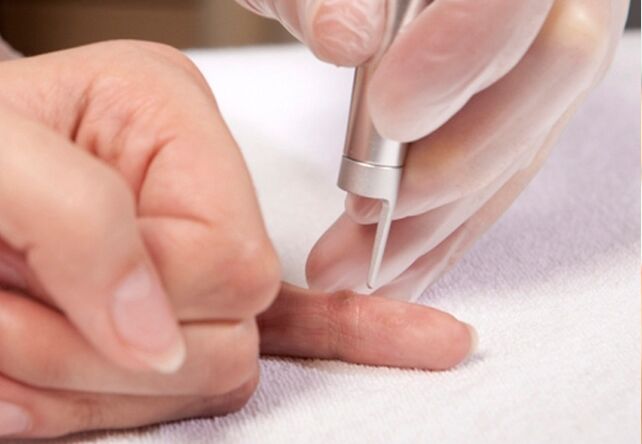Warts are nothing more than a non -inflammatory skin pathology. The disease manifests itself in the form of benign neoplasms of the epidermis, the size of which can reach 10-15 mm. Neoplasms of this type have no favorite localization, first warts may appear on the fingers, and then on the face and feet. The appearance of unpleasant warts is the main reason many women, as well as men, prefer to get rid of unwanted skin growth.
Clinical picture and characteristics of the disease

Warts are called round formations that occur on the surface of the skin as a result of excessive growth of the upper layer of the epithelium, as well as the papillary subcutaneous ball located just below it. Sometimes the appearance of the formation is not at all related to the proliferation of the epithelium, as it can appear as a result of skin infection with human papillomavirus (HPV). In any case, warts on the soles of the feet, hands, and even on the face bring a lot of difficulties, so the development of psychological complexes, which is why the problem of dealing with them is quite relevant.
The size of the papule depends on its location and variety. The minimum size of the formation is 1. 5 mm, the maximum is 6 cm.
Notes! Warts tend to merge, as a result of which the size of the papule increases significantly. Neoplasms take the shape of a cylinder or hemisphere, have a relatively large appearance and cause psychological and physical discomfort.
In the early stages of development, the color of the papule does not differ from the color of the skin, however, after a certain time, the formation becomes purple, and sometimes black. Partly due to this color, warts are caused by dirt, which adheres perfectly to the rough surface of the formation. The change of color features occurs many times faster if the wart is located on the foot.
What is the cause of the appearance of warts, the etiology of its formation?
When warts appear, the cause of the development is the penetration of human papillomavirus infection into the human body.

Additional information! A person can be a carrier of the virus for a long time, but due to the absence of pathological manifestations in the form of warts, do not guess about it.
Methods of viral infection:
- the presence of micro -lesions and cracks on the skin contributes to the penetration of the virus inside;
- during close contact with the affected patient. So, often the disease is sexually transmitted;
- the use of hygiene products and items of affected people can also lead to viral infections;
- you can catch papillomavirus infections in places of public use, such as gyms, swimming pools, bathhouses, saunas;
- if the mother is a carrier of the virus, it can be transmitted to the child during the last passage through the birth canal.
Important! To prevent infection of the baby with papillomavirus, special attention must be given to the treatment of pathology during pregnancy.
Factors that contribute to the development of the disease:
- living a busy lifestyle, frequent sexual partner changes;
- neglect of hygiene rules;
- weakened immunity. Even if a person is a carrier of the virus, strong immunity will not allow the latter to become active;
- frequent stress;
- transmitted infectious diseases;
- chronic fatigue;
- hormonal imbalances;
- avitaminosis;
- poor environmental conditions;
- work involving the use of aggressive materials.
Types of warts
Depending on the characteristics of the wart and the symptoms that accompany its occurrence, there are four main types of neoplasms.
So, the types of warts:
- ordinary or simple;
- rata;
- nyanyuk;
- pointed condyloma.
Let’s discuss in more detail about the features and characteristics of each type.
Features simple warts
The characteristics of common warts (common warts) include:
- the main place of localization is the back of the hand;
- papule diameter from 1 to 10 mm;
- Normal warts usually heal on their own within two years and do not require special treatment.
Various simple warts are plantar (plantar warts).
Characteristics of plantar warts:
- warts on the feet are more likely to appear in people characterized by excessive sweating on the feet;
- papules are located mainly in places of increased shoe pressure on the skin;
- initially, the papule has a yellowish gray color, a rough and uneven surface. Advanced stages of pathology are characterized by discoloration to gray-dirty, significant compaction of the affected cover, its keratinization;
- warts on the legs are among the most painful. In some cases, disease progression leads to partial disability;
- as a rule, warts on the legs appear single, but sometimes the number reaches 5-6. With the progression of the disease, small plaques can coalesce, forming mosaic warts.
flat warts or juvenile warts
The main difference between flat or young formations (plane warts) is the fact that these warts most often appear in children and adolescents.
Signs of airplane warts:
- papule smooth surface, diameter size not exceeding 1. 5 mm. ;
- height elevation above the area near the epidermis reaches 2 mm;
- its shape is round or irregular;
- place of localization - the outer surface of the hands, facial skin, lower legs;
- papules do not stand out strongly on the surface of the skin, not only because of its flat shape, but also its bright color (pink, flesh);
- The etiology of juvenile warts is associated with exposure to external stimuli. So, the formation may appear at the site of a wound or injury to the skin.
Symptoms and characteristics of pointed warts
Signs that characterize this type of wart, such as condyloma (genital warts), include:
- pink growths that occur in the early stages of pathological development gradually merge with each other, forming a kind of growth located at the base that looks like a foot;
- favorite places for localization of warts of this type are the genitals, both female and male;
- condyloma is transmitted by contact. The risk of contracting the disease increases if there are micro cracks and wounds on the genitals of the carrier;
- pointed warts are characterized by growth, therefore, when the first signs of the disease are found, you should immediately contact a dermatologist;
- condyloma is a sufficiently fertile ground for the manifestation and development of other pathologies of the inguinal zone. Therefore, lack of treatment in women can lead to the development of serious diseases such as cervical cancer.
Signs of seborrheic keratosis
Senile warts or what is called seborrheic keratosis: signs and characteristics of education:
- parental characteristics;
- perhaps the cause of pathological development is the defeat of the cells of the main layer of the skin;
- this type of wart has nothing to do with HPV;
- most often, the manifestations of the disease affect the skin of the chest, less often - the face, neck, hands, forearms and legs;
- nature of multiple formations, usually the number of keratosis elements does not exceed 20;
- predisposition to genetically transmitted seborrheic warts;
- the minimum size of the papule diameter is 2 mm, the maximum is 6 cm.
The clinic of senile warts depends on the stage of development and its location on the body. In the early stages, these are flat spots with clear, pink or yellow edges, covered with a crust that easily peels off. Over time, the crust becomes rough, its thickness reaching two cm. With the development of pathology, the papule takes the form of a fungus, becoming dark brown or black.
The process of development of seborrheic warts lasted for more than a dozen years, but no malignant transformation occurred with papules during this period.
Features of wart treatment

What you need to know when treating warts:
- it is impossible to get rid of a papillomavirus infection, it will remain in the body forever. The main task of the carrier is to deactivate the virus, transferring it to a latent form;
- the disease is recurrent;
- after removal of warts on the epidermis, as a rule, the marks remain in the form of scars and scars;
- sometimes the formation disappears on its own, especially for young patients.
Important! Identification of the first signs of warts should not cause panic, timely visits to a dermatologist and the appointment of effective treatment will help eliminate the pathological signs and maximize the remission period.
Traditional methods of dealing with warts
Notes! The therapeutic course is based on the use of classical medicine and techniques, however, in the early stages of the disease, obvious success can be achieved with the help of traditional medicine.

Comprehensive treatment of warts involves the use of general and local action medications, as well as medical procedures.
Popular methods of dealing with warts:
- laser removal of papules. It is considered one of the most effective and fastest methods, does not injure the skin;
- electrocoagulation method. Promotes growth reduction with exposure to high temperatures;
- cryotherapy or cauterization;
- surgical removal. This method is very rarely used.
Is it possible to get rid of warts with traditional medicine?
The following folk remedies have a good effect in the treatment of neoplasms:
- celandine juice. Used to burn papules;
- compresses and decoctions based on celandine;
- rubbing of dandelion juice. Lubricate the affected area should be at least three times a day;
- garlic and onion juice;
- healing infusion based on wormwood.
You can get rid of warts by performing a cold procedure. Cauterization with vinegar gives a positive effect. However, when using vinegar or its essence, safety rules must be followed.
The appearance of warts on the skin indicates a disorder in the body, therefore, when the first signs of pathology are detected, it is recommended to consult a doctor to diagnose the disease and prescribe treatment.


















